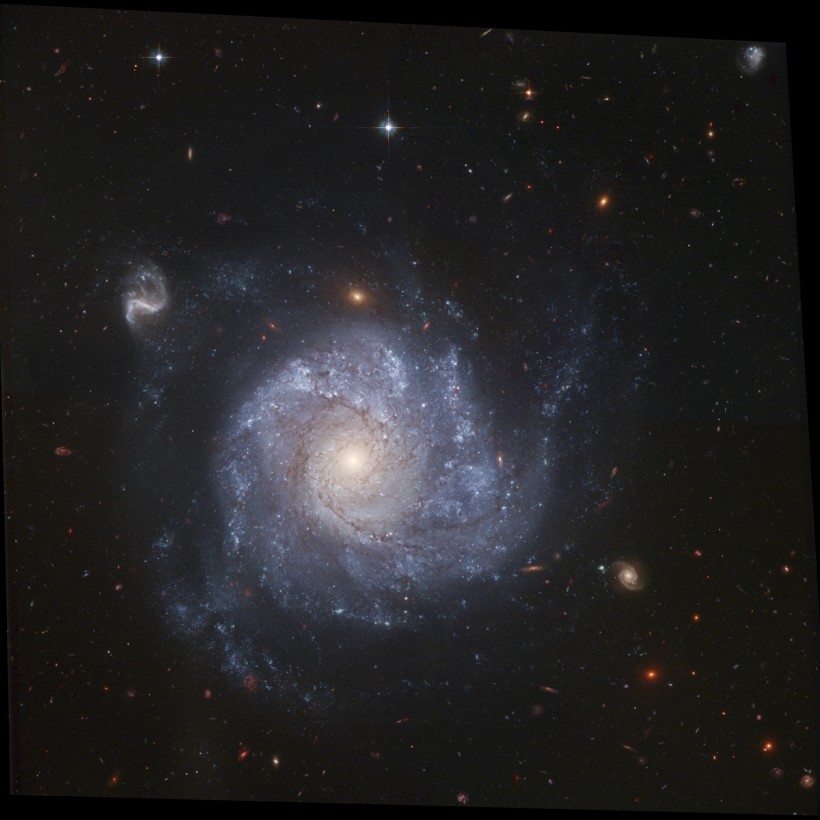
This image of NGC 1309 extends out to the physical edge of the ACS field. The image was taken in 2005. NGC 1309 is 100 million light-years (30 Megaparsecs) distant.
It is now unclear how and why white dwarf stars produce supernovas after astronomers discovered one that miraculously survived its own thermonuclear explosion.
What Is Thermonuclear Supernovae
The catastrophic star explosion is known as a supernova. A thermonuclear supernovae signifies the total obliteration of a white dwarf star, leaving nothing behind. These Type Ia thermonuclear supernovae are among the most important instruments in the astronomer's toolbox because they are used to calculate cosmic distances.
According to Las Cumbres Observatory, although crucial to astronomy, thermonuclear supernovae are poorly understood in their origins. The consensus among astronomers is that they are the result of white dwarf stars, which have a mass similar to the sun but are about the size of the Earth, being destroyed.
The reason stars explode is a mystery. As per one theory, the white dwarf takes matter from a nearby star and when it becomes too massive, thermonuclear reactions start in the star's core and cause a runaway explosion, which kills the star.
White Dwarf Survived Its Own Thermonuclear Detonation
The unusual thermonuclear supernova SN 2012Z was investigated by a team of astronomers under the supervision of Dr. Curtis McCully, Senior Astrodata Scientist at Las Cumbres Observatory, who were astonished to discover that the star had survived the explosion.
The discovery that the star was even brighter after the supernova explosion than it had been before stunned the scientists. The puzzling discoveries provide new information on the sources of some of the frequent yet mysterious cosmic explosions.
The Astrophysical Journal published an article with these findings.
Supernova SN 2012Z
A Type Iax supernova, or SN 2012Z, was a peculiar kind of thermonuclear explosion. These supernovae are the weaker, less bright cousins of the Type Ia, which is the more common type. Some people have suggested that these explosions are unsuccessful Type Ia supernova explosions since they are slower and less intense. The most recent observations support this view, as per Las Cumbres Observatory.
The nearby spiral galaxy NGC 1309 housed the supernova 2012Z, which was discovered in 2012. In the years preceding 2012Z, numerous Hubble Space Telescope photos had been taken of this galaxy and it had been thoroughly investigated. In 2013, Hubble photos were collected in an effort to determine which star in the earlier images matched the star that had exploded.
This data was successfully analyzed in 2014. In fact, experts were successful in locating the star that was exactly where the supernova 2012Z was located.
Meanwhile, Space.com mentioned that with this data, researchers imaged a Type Ia supernova's progenitor for the first time ever. But there appeared to be a problem with the Hubble data. In addition to demonstrating that the progenitor had survived the explosion, the photos also revealed that the white dwarf star was now considerably brighter than before.
"Nobody was expecting to see a surviving star that was brighter," Curtis McCully, an astrophysicist at the Las Cumbres Observatory headquartered in California, said in a statement. "That was a real puzzle."
After studying SN 2012Z, McCully and his colleagues offer a tentative theory for what transpired. The scientists argue that the thermonuclear explosion lacked sufficient force to completely destroy the white dwarf. Scientists anticipate that the star will eventually revert to its previous inactive state.
Related Article: Mars Express Orbiter Will Get Software Upgrade After 19 Years - Here's What You Need To Know














